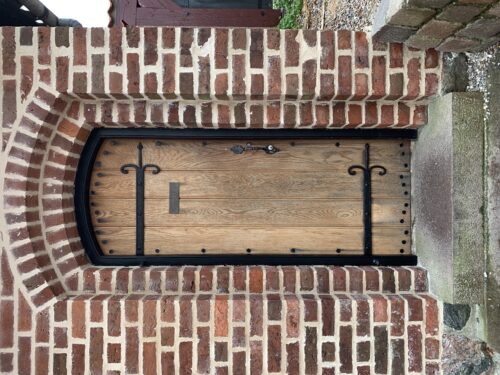Aside from hiking the Gendarme Path in the southeastern part of South Jutland, I spend days exploring several other parts of South Jutland. From 1864 to 1920 this whole area was part of Germany.
Not far from where my friends and I hiked the Gendarme Path is the small town Augustenborg. It grew up around the castle Augustenborg Slot, which was built in the period 1770-1776. So, while the Americans were fighting bloody battles to free themselves from British colonialism, the Danish aristocracy was building castles and pretty houses, many of which have fancifully decorated doors.

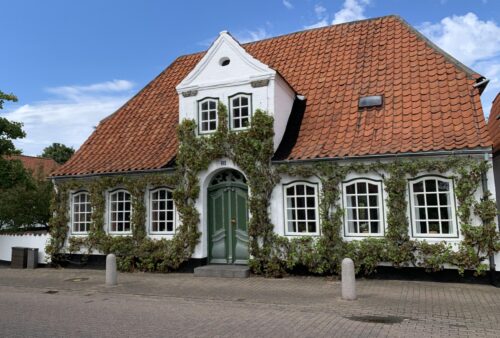
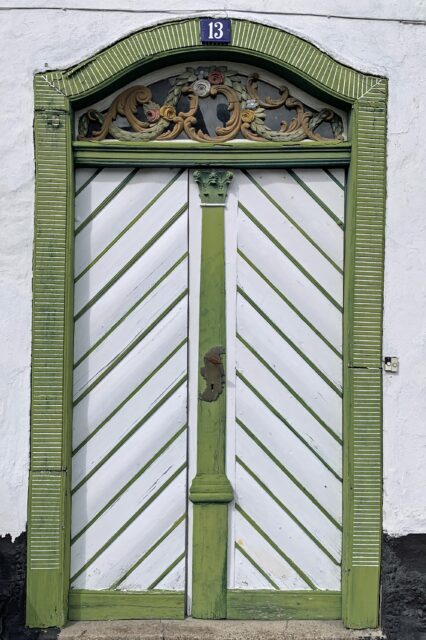

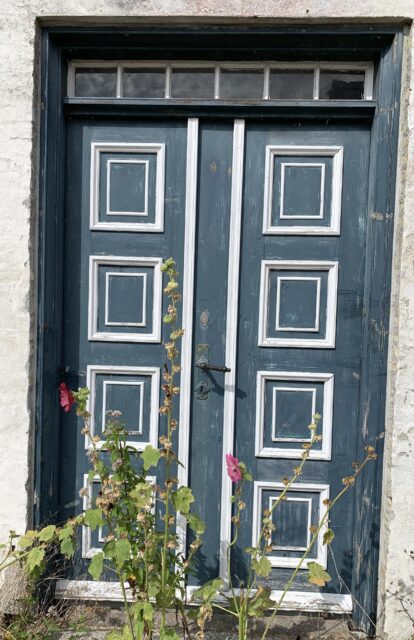
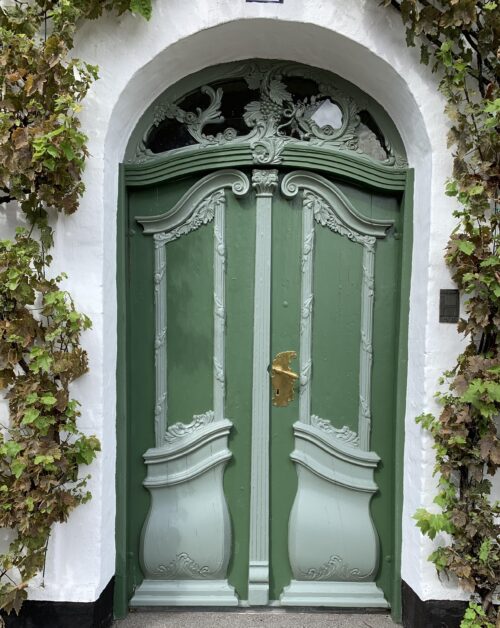
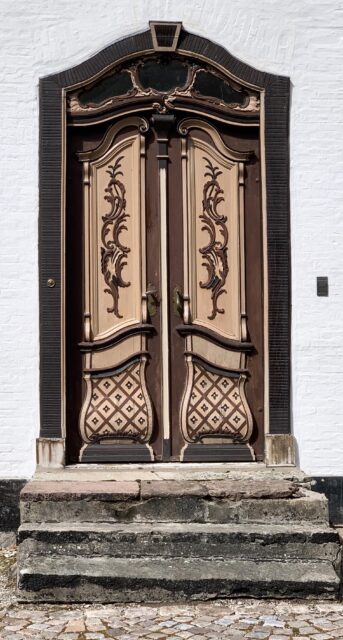
Further west lie another couple of charming towns with amazing doors. The town of Tønder was mentioned already in the 1100s by the Arabian cartographer Al-Idrisi. In 1243 it was officially designated a market town, making it Denmark’s oldest with this official designation (next oldest are Copenhagen (1254) and Ribe (1269), the latter of which we’ll get back to shortly).
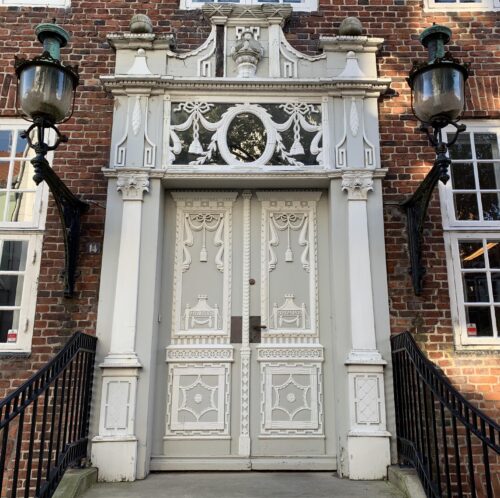
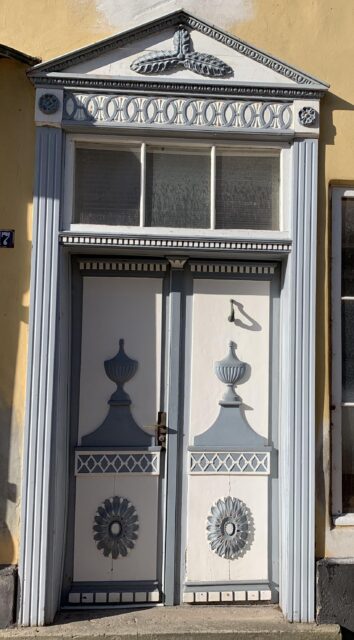
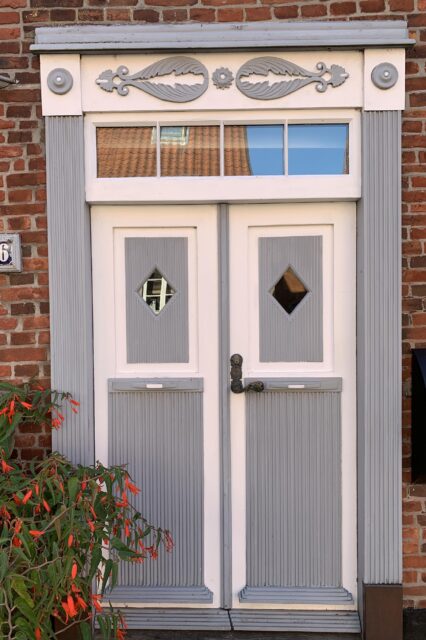
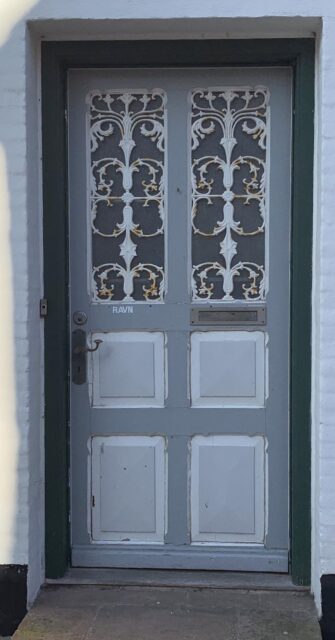
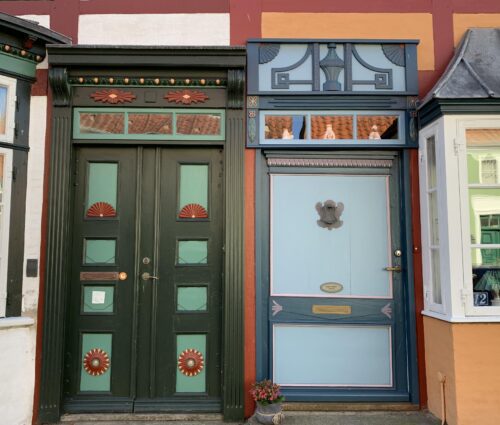
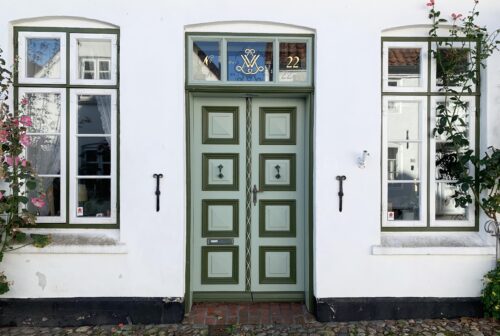
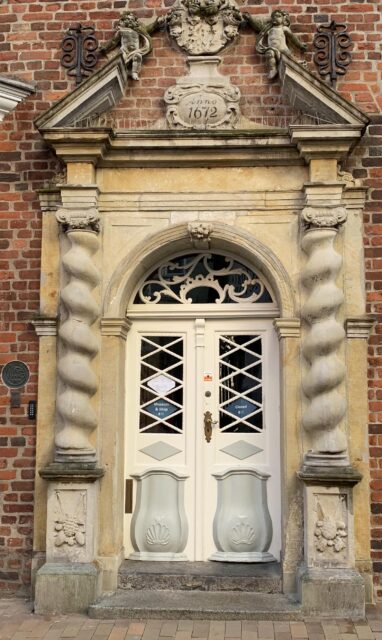
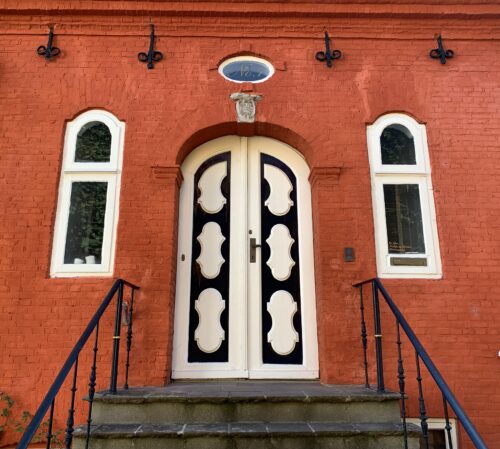
Just a few kilometres from Tønder is the town of Møgeltønder. Its claim to fame is the baroque castle Schackenborg Slot from the 1600s, which has been the home of royals and other blue-blooded types for centuries. The town, with its famous inn Schackenborg Slotskro from 1687, cobbled streets and picturesque houses from the 1600s and 1700s, has an ambience all its own.
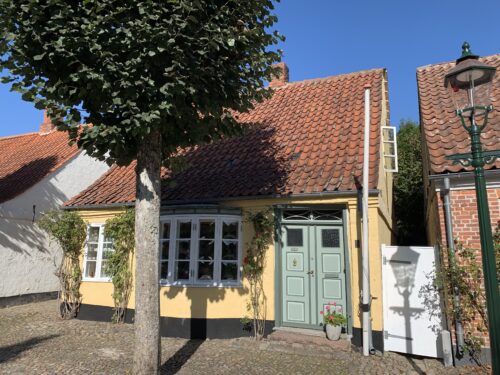
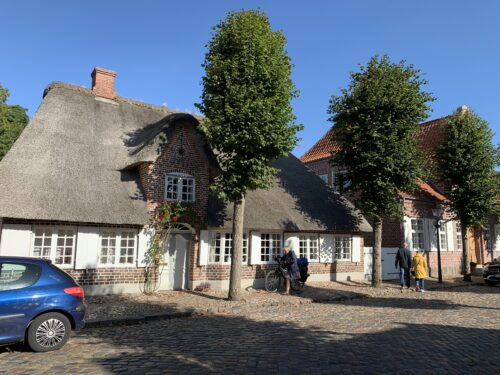
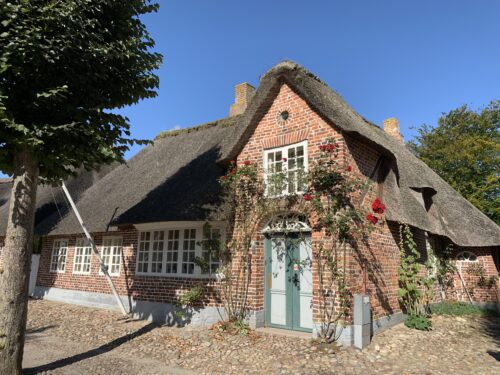
Doors and drawings from the past
Møgeltønder also has incredibly pretty doors. I love these old doors and can’t help taking pictures of them!
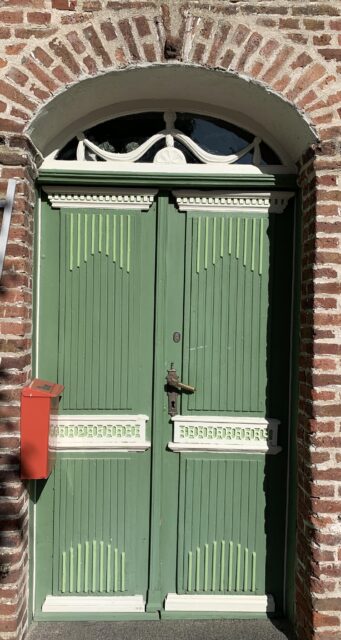


 Walking further down the cobbled lanes past the castle, the inn, and the quaint houses brings you to the ornately decorated church that was built in the middle of the 12th century.
Walking further down the cobbled lanes past the castle, the inn, and the quaint houses brings you to the ornately decorated church that was built in the middle of the 12th century.


The fanciful paintings on the church’s ceiling are from the 1500s. They depict biodiversity in Eden, and barbarism, cruelty and judgment on Earth and in Heaven and Hell. Apart from the biodiversity these concepts do not sound very appealing to me.

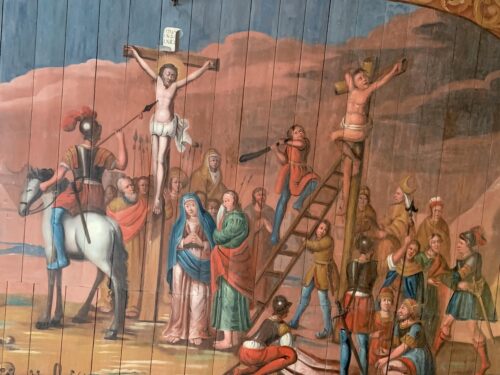

As I mentioned earlier, the town of Ribe is one of the oldest market towns in Denmark. Although it was officially designated a market town in 1269, it is actually much older. Ribe was established sometime between 704 and 710, making it Denmark’s oldest town. This was the time of the Vikings! Its location by the river Ribe Å, which leads into the North Sea, made it ideal for trade.
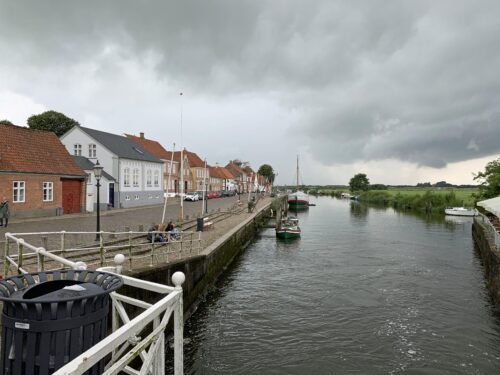
The historic cathedral is from about 1150.
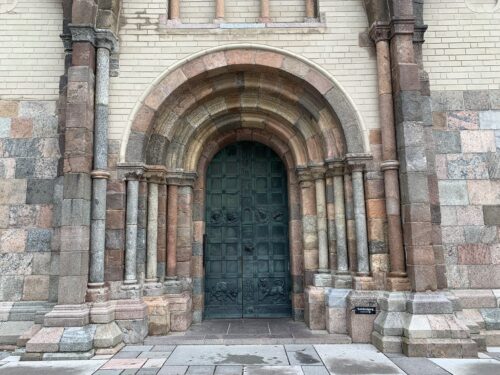
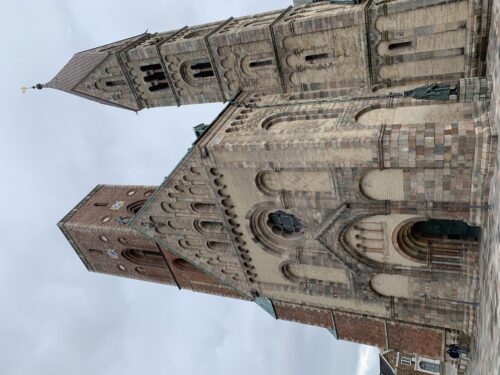
The half-timbered houses and cobbled streets have lasted well through the centuries, as have the colourful doors.
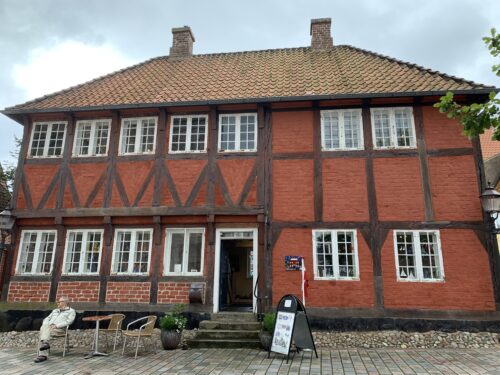
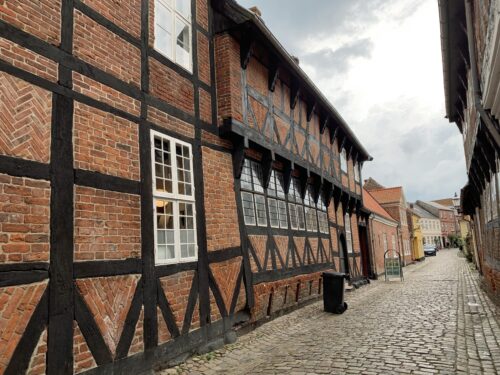
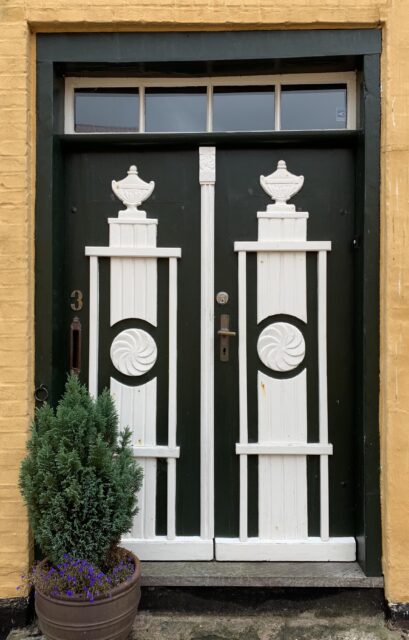

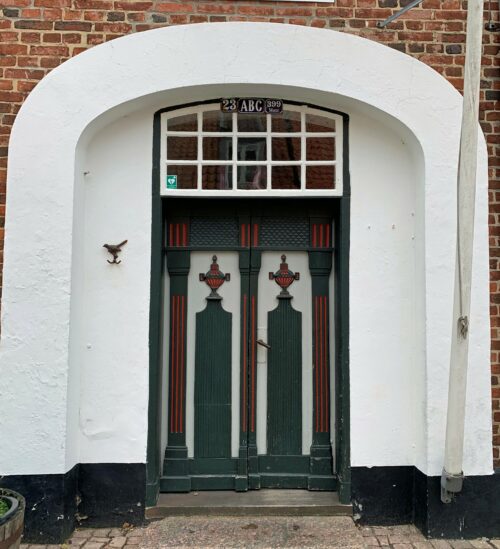
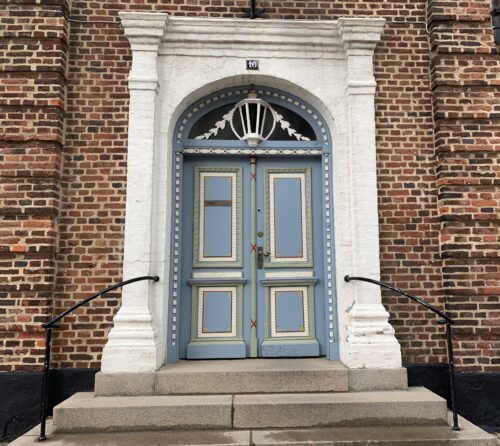
Even the door to the public toilet is picturesque!
